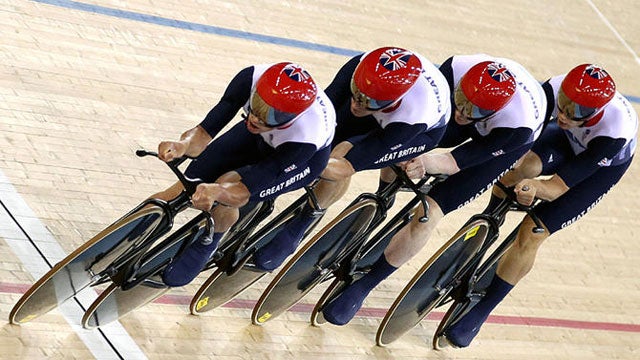In case you haven't noticed, high intensity exercise is in. These days, the focus is on interval training—how the truly elite athletes get in peak shape. And the But it’s also incredibly confusing. It seems like a new study comes out every other week claiming to have found the new “best” way to train.
What’s the bottom line—have researchers found the optimal training program?
Know the Lingo
Before we get into the weeds, it’s important to cover the basic language of interval training. The period of intense exercise is typically referred to as the “work” period and the period of less intense exercise is known as the “relief” or recovery period. When comparing those two periods, coaches will often speak of the work to rest ratio.
These basic concepts are interpreted differently in each sport. In cycling, coaches speak of time on compared to time off, in swimming it is usually a set distance with a set rest period. For example “10 x 100m leave on the 2 minutes at 85 percent effort” means the athlete swims 100m at 85 percent effort and then rests at the wall until two minutes is up and goes again. In distance running, the classic interval workout for elite athletes is something like 20 x 400m with a 200m jog. The combinations are endless.
Heart Rate
When interval training began in Germany during the 1930s, there were about the need to increase heart rate to 180 beats per minute during the work period, letting it fall to 120 beats per minute during the relief and then starting the next work period. Because of timing, the favored work period for runners was typically 200m, and one of the early adopters was Rudolf Harbig who set the world record for 800m in 1939 that lasted for more than
What Kind How Many?
Coaches, athletes and physiologists are less concerned about strict adherence to heart rate during the work and relief intervals now. However, the debate about how best to structure an interval workout goes on and on and on. Some people favor short intervals with brief periods of rest while other long intervals with longer periods of rest.
Longer intervals of three to five minutes at about 90 percent or more of maximum effort with between two to five minutes of relief are highly effective at increasing exercise capacity, helping to raise the ceiling of maximum oxygen uptake that acts as the upper limit for nearly all endurance events.
Shorter intervals of say 30 seconds on and 15 seconds off for 15 to 30 minutes minutes are an excellent way to do a lot of training at faster than race pace. These are who wants to get as sharp as possible for a big race.
It is also possible to get a lot of bang for the buck using a mixed program. When highly trained recreational cyclists from 200km per week and replaced it with a couple of bouts of very high intensity exercise (12 x 30s sprints two or three times per week) and long intervals (four or five sets of three to four minutes at 90-100 percent of heart rate max once or twice a week) for seven weeks their performance improved. This improvement occurred even though they were only averaging about 60km per week of cycling and led the authors to conclude that:
…endurance athletes may benefit from replacing some of their endurance training with sessions of high-intensity exercise. This information is of interest not only for elite endurance athletes, but also for recreationally active individuals seeking to optimize performance.”
What to Expect
So what happens when average people start training like elite athletes?
In one , eight sedentary subjects (seven men) increased their maximum oxygen uptake 44 percent using a 10 week program that included intervals sessions of five x five minutes on the bike at close to maximal effort with two minutes of recovery. The bike sessions occurred three times per week and there were hard runs on the alternate days! At the end of the study exercise capacity was still increasing but as the authors noted that the training regimen was incredibly psychologically taxing:
…as the study approached its conclusion, we asked the subjects if they would continue to train. Unfortunately they almost unanimously refused for the reason that they found exercise of this frequency and intensity too tiring and time-consuming. A number said they had wanted to drop out of the study but had continued out of a sense of responsibility and because they knew the study was scheduled to last only 10 weeks. Only one subject trained for an additional three weeks.”
Application of This Information
- How much intense training are you doing? The high intensity patterns described in the papers would seem to get people the most bang-for-their-time spent training. This is important for people with busy schedules or perhaps people juggling different disciplines for the triathlon.
- These programs are not for the faint of heart. Even though they might be seem as time efficient they are very demanding.
- Almost anyone can benefit from higher intensity exercise including people with hypertension, diabetes and heart disease. However, unfit middle-aged and older people with medical problems need to start off in a more supervised setting and build up slowly.
The Bottom Line
Given how tough interval training can be, a reasonable and sustainable plan should incorporate a variety of strategies. Start with at least one long and one short interval session per week, in addition to your regular training. As you prepare for “the big race,” a month on the Denmark protocol of 30 seconds on followed by 30 seconds off will help you sharpen your edge. If you have never tried to peak, you will be amazed at what it can do for your times.


